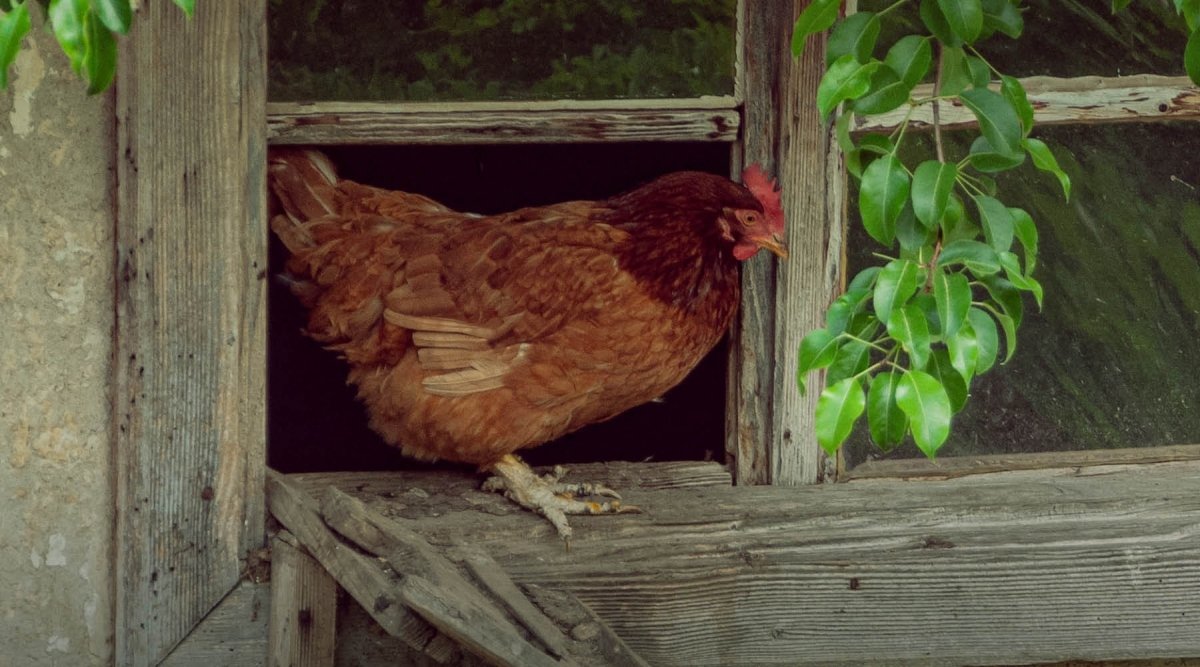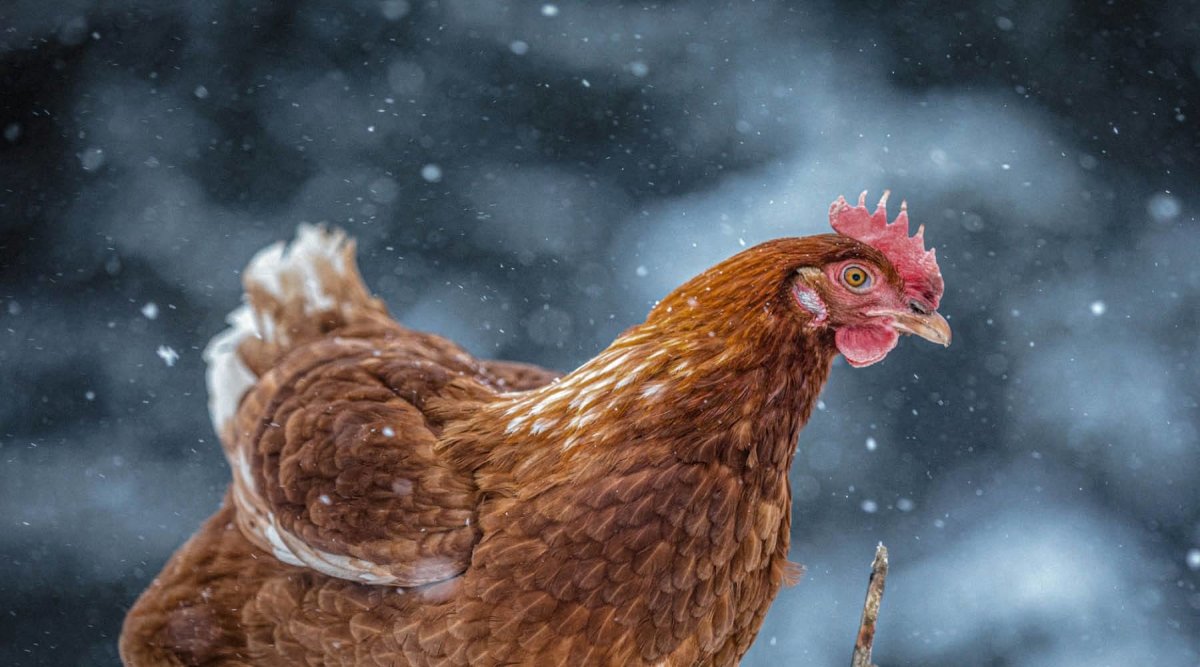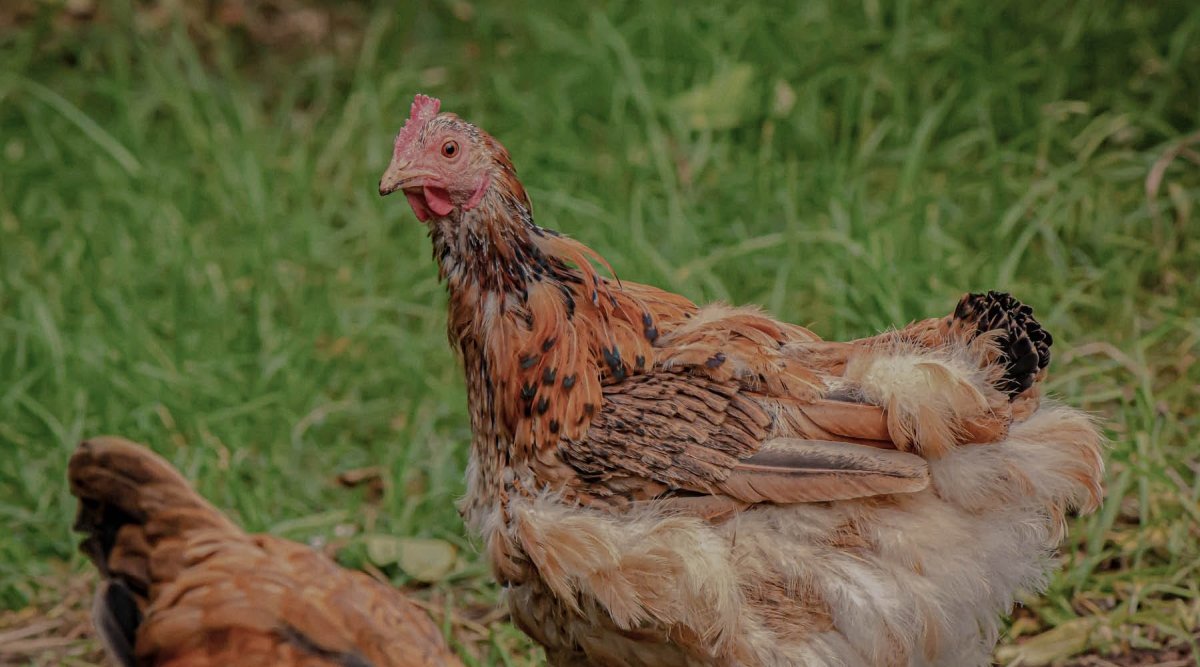Chickens are often affected by parasites. Ectoparasites such as various types of mites can infest chickens. But endoparasites, mostly worms, can also settle in poultry. Once a chicken is infested, the chicken parasites can quickly spread to the entire poultry flock. This can lead to severe signs of illness in the animals and can also be annoying and not entirely harmless for us humans. Whether calcareous mites, fleas or worms, in this article you will find out which chicken parasites occur most frequently and how to correctly recognize and combat these annoying pests.
Table of contents:
Correctly recognizing and treating chalk leg mites in chickens
A common parasite infestation in animals is caused by mites. Chickens suffer greatly from this infection. Calcium mites are among the most common parasites and are very unpleasant companions. These chicken parasites are known in other animal species as burrowing mites (Sarcoptes) or scabies mites. The disease that the mites cause in chickens is known as chicken mange. It is comparable to Sarcoptes mange in dogs and cats and to scabies in humans.
Recognizing chalk leg mites in chickens is not that easy. Only when the infection with the ectoparasites in chickens is well advanced do the symptoms become apparent. The pests bore tunnels into the skin of the chickens, especially the feet, and lay their eggs in the upper layer of the skin (epidermis). The drilled passages and laid eggs push the scales of the chicken's feet outwards so that the scales stick out. In addition, the chicken parasites promote inflammation and swelling of the feet. Infestation with calcareous leg mites causes the calcareous legs often feared by chicken keepers. They cause great suffering to the animals and should not be taken lightly.
Symptoms of chalk leg mites in chickens
- barky white thickenings on the feet
- Skin scales and incrustations
- Callus growths
- Swollen, thick legs
- Restriction of movement
- Itching
- General weakening of the animal
- Secondary infections caused by bacteria and viruses
- Inflammations
Treatment of calcific mites in chickens and poultry
Calcified mites are highly contagious and can even survive for some time outside the host. Chickens become infected with the parasites through direct physical contact or in the animals' environment.
Once the animals are infected, healthy animals should first be separated from obviously sick animals. However, healthy chickens must also be treated preventively against chalk leg mites. There are many chemical agents against mites, not all of which are well tolerated by chickens. To eliminate the parasites on the chicken's feet, vets can provide appropriate insecticides and antiparasitics. However, the chicken coop or the animals' enclosure must not be neglected either and require thorough disinfection and cleaning.
Natural home remedies for chalky legs on chickens
Not everyone wants to resort directly to chemicals when treating their animals. The good news is that home remedies for chalky legs in chickens have also proven effective. You can start by soaking the animals' feet in curd soap to loosen the tough calluses. Of course, this only works if the animals do this without resistance. If the tissue on the feet is well swollen, it can simply be scraped off and thoroughly disposed of.
The feet should then be rubbed with high-quality oils such as kerosene oil, geraniol, lemon eucalyptus oil or penetrating oils. The oils also help to support and regenerate the skin and deter new parasites due to their intense odor. This treatment for chalk leg mites in chickens should be repeated several times at intervals of 1 week.
Feather lice in chickens - correct symptoms and treatment
Feather lice or feather lice are ectoparasites that like to infest chickens. They feed mainly on feathers, skin flakes and other tissue of the hosts, less frequently on blood or other body fluids. Although feather lice are not bloodsuckers, they are very unpleasant for chickens. They cause increased stress and behavioral changes in the animals. In addition, the parasites put a strain on the immune system and the chickens become more susceptible to other diseases.
Particularly in winter, the parasites are on the lookout for a place to hide and like to nest in chickens' feathers. Although feather lice are easily recognizable as small brownish spots on the animal, they are very quick and difficult to catch. In addition, an infestation with feather lice can quickly lead to a large population. This is because the parasites are very prolific, with up to 100,000 offspring per month, which in turn does not make feather lice control easy.
Recognizing symptoms of feather lice in chickens
The animals usually become infected via other already infected animals. Limited space in the coop or run contributes to the risk of infection. If the animal is infected with a few feather lice, the chickens show no signs of illness. The following symptoms usually only appear when the infestation is high:
- restlessness
- Frequent preening of the feathers
- changes in behavior
- disturbed general condition
- dull plumage
- increased susceptibility to infections
- bald patches in the plumage
Feather lice like to settle in protected areas of the chicken. They are mainly found on the undersides of the wings. But they also feel at home on the thighs, the tail feathers or the cloaca.
Feather lice control - acting correctly
Feather lice control in chickens usually works with conventional products such as antiparasitics. They have a toxic effect on the lice and cause the feather lice to die. However, combating feather lice with chemicals is not free of side effects and can have an impact on the chickens' well-being. Home remedies for feather lice in chickens are a natural alternative.
Natural remedies for feather lice and feather lice in chickens
Natural home remedies for feather lice are mainly coconut oilessential oils such as neem oil and geraniol or diatomaceous earth, which is made from dead algae. diatomaceous earth. The oils are based on the active principle of deterring the animals through their intense odor, whereby the lauric acid in coconut oil even causes the chicken parasites to dry out. Diatomaceous earth also contributes to the death of feather lice by injuring the parasites through the porous dust and eventually drying them out.
A sand bath for the chickens can also curb the spread of feather lice. By scrubbing in the sand, the animals strip off the ectoparasites and crush them unconsciously. In addition, the chicken coop and perches should be cleaned if there is an infestation of feather lice.
Red mite in the chicken coop - control and prevention

The red mite is one of the most common ectoparasites in chickens. The arachnids are found on both poultry and wild birds. Red mites are nocturnal and only visit their hosts temporarily to suck their blood. The blood serves the chicken parasites both as food and for reproduction and egg production. Protected in small crevices, cracks or cavities in the coop, they finally lay their eggs. Although red mites can be active in the henhouse all year round, they prefer warm summer temperatures.
In contrast to other ectoparasites such as fleas or feather lice, a minor infestation with red mites can lead to anemia and death in young and weakened chickens. The pests also suck on humans and lead to the dreaded bird-keeper dermatitis among poultry farmers.
Red bird mite: signs in chickens
An infestation with these red poultry mites means pure stress for the animals. They become restless and their well-being is impaired. Other symptoms of red bird mites in chickens are
- Itching
- Inflammation
- Poor physical condition
- Swollen, scaly legs
- Listlessness, tiredness
In case of severe infestation
- Laying performance may decrease
- In young and weakened animals: Blood loss or death
- Paleness of the chicken comb due to heavy blood loss
Although red mites are difficult to identify on chickens due to their speed, the "white cloth method" can provide more information about a possible infestation. This involves spreading a white cloth on the perches in the henhouse and finding grayish to black or even reddish spots on the cloth the next morning. This is a clear indication that the chicken coop is infested.
Another method uses adhesive strips. These are attached to the perches of the animals and cause the mites to stick to them.
Fighting red mites - chemical vs. natural
As the parasites spread their eggs throughout the coop, the nests of the red mite must first be found and thoroughly eliminated. You can render the nests harmless with a Bunsen or gas burner. Extreme care should be taken with wood to avoid starting a large fire.
Once all the nests have been removed, insecticides and acaricides can be used to clean and disinfect enclosures, cages and stables. These synthetic agents are highly toxic to eggs and adult red mites and lead to the death of the population. They can also have negative effects on the chickens. In addition, the animals should not be returned directly to the barn. Extensive ventilation is recommended.
Natural repellents can be used to avoid the possible side effects or restrictions of chemical products. These are usually enriched with essential oils and make the chicken unattractive to the mites. The perches in the coop should also be rubbed with essential oils.
Diatomaceous earth can also be sprayed several times in the coop as an additional coop cleaning agent. The use of natural products should be repeated several times.
The natural raw materials can also be used as a preventative measure to counter an infestation of red bird mites at an early stage.
Chicken fleas - getting rid of the annoying beasts
Chickens are also very susceptible to fleas, as they usually live in populations and have close contact with their conspecifics. Chicken fleas are very persistent and multiply rapidly. A single female lays up to 50 eggs a day. While the adult fleas feed on the host's blood, larvae or newly hatched animals use the dried droppings of adult chicken fleas. However, fleas can also survive for a longer period without a host. Chicken or bird fleas are not host-specific and sometimes also settle on dogs, cats or humans.
Chicken fleas are usually transmitted through contact with other infected animals. Wild birds can also spread the annoying ectoparasites. However, they are also attracted by CO2 emissions when breathing, body heat and, of course, movement. Most fleas, whether in the larval stage, as flea eggs or adults, can be found in the litter, nesting material and roosts of chickens. The annoying parasites are also active all year round, although they do not reproduce in cold temperatures below 5 degrees.
Signs of chicken fleas
Although mass flea infestations in chickens have become rather rare nowadays, the pests can nevertheless be very unpleasant for the animals. A timely reaction if fleas are suspected can curb their spread.
Chicken fleas can sometimes even be seen with the naked eye. However, the jumping parasites are very agile and difficult to catch. The first signs of chicken fleas are
- Itching
- Increased restlessness
- Bald patches in the plumage
- emaciation
- changes in behavior
- Single puncture marks
In case of severe infestation
- Iron deficiency anemia
- Blood loss, even fatal in chicks
Fighting chicken fleas
These annoying parasites are very stubborn contemporaries. Effective control of chicken fleas takes a lot of time and energy. Once the chickens are infested, both the animals and the coop and enclosure must be treated thoroughly. Effective remedies against fleas are available on both a chemical and natural basis.
A Bunsen or gas burner should also be used to rid the chicken coop of fleas. This effectively destroys the eggs, even in hard-to-reach places such as cracks or crevices. The bedding should also be burned. Then thoroughly clean and disinfect the hutch, perches and sleeping areas.
Diatomaceous earth can naturally help to control fleas and is often used as a substitute for chemical products.
In addition to cleaning the enclosure, the animals must also be treated. All chickens should be sprayed with an appropriate flea repellent or diatomaceous earth.
Worms in chickens - the parasites inside
In contrast to ectoparasites, which mainly settle on the outside of the chicken, worms are so-called endoparasites and infest the host on the inside. Chickens can become infected with both tapeworms and threadworms. While tapeworms mainly reproduce in the intestines, threadworms can also lay eggs in other organs such as the lungs or liver.
As a rule, chickens become infected with these annoying intestinal parasites in the environment. They ingest worm-infected droppings or eat insects and snails that have already been infected with eggs. The risk of an acute worm infestation in chickens is therefore higher in summer. The most common types of worms in chickens are roundworms, tracheal worms, hookworms and hairworms.
Chickens are sometimes infested with worms for their entire lives; they only become dangerous when the endoparasites cause clear signs of illness in the animals. Particularly in young animals and chicks, the parasites can cause pronounced symptoms and become life-threatening.
Symptoms of worms in chickens
To recognize worms in chickens, you should look out for the following symptoms:
- Loss of appetite
- emaciation
- listlessness
- (Bloody) diarrhea
- Pale, dry comb
- Lack of movement
- Laying performance decreases or stops completely
- Chickens become increasingly puffed up
- In the case of tracheal worm, the chickens open their beaks and try to gasp for air
In most cases, a chicken droppings analysis by a vet can provide clarification. If it is positive, it can be assumed that the worm infestation is already well advanced.
Deworming chickens - natural or conventional?
In the event of a worm infestation, all chickens in the flock should be wormed so that they do not re-infect each other. Chemical worming treatments are aggressive but effective. Whereas natural products can take much longer and need to be repeated several times. In addition, when treated with natural ingredients, the eggs can still be eaten. With chemical toxins, the eggs are initially no longer edible.
Deworming chickens naturally:
- Sage leaves
- Walnut leaves
- parsley
- thyme
- Mugwort
- wormwood herb
The herbs and leaves also help to maintain normal stomach and intestinal mucosa, support digestion and can also strengthen the animals' immune system. This is because the worm population remains limited in chickens with strong immune systems and does not cause any damage to the animals' bodies.
Conclusion
Chickens can be infested with numerous parasites. While some are barely noticeable, others can cause the animals a great deal of stress and even lead to death in young chickens. If you find parasites on your animals, you should consider using a chemical or natural remedy. While chemical products provide rapid relief, especially in the case of very acute infestations, natural remedies for parasites in chickens can be used all year round. It is also a good idea to build up a strong immune barrier against parasites in chickens. This can be achieved by adding immune-boosting herbs to the feed. This makes it more difficult for the pests to seriously damage the host.





